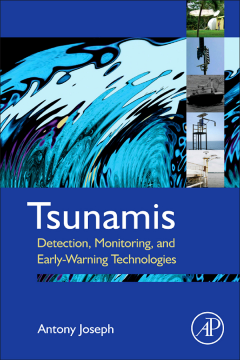
Additional Information
Book Details
Abstract
The devastating impacts of tsunamis have received increased focus since the Indian Ocean tsunami of 2004, the most destructive tsunami in over 400 years of recorded history. The tsunamis that occurred as a result of the earthquake in Japan in March 2011 further emphasized the need for detection, monitoring, and early-warning technologies. This professional reference is the first of its kind: it provides a globally inclusive review of the current state of tsunami detection technology and will be a much-needed resource for oceanographers and marine engineers working to upgrade and integrate their tsunami warning systems. It focuses on the two main tsunami warning systems (TWS): International and Regional. Featured are comparative assessments of detection, monitoring, and real-time reporting technologies. The challenges of detection through remote measuring stations are also addressed, as well as the historical and scientific aspects of tsunamis.
- Offers readers the only source of practical content on the technological details of the subject
- Written by a tsunami detection and monitoring expert who has 32 years of experience in the field
- Companion web site featuring multi-media components, timely updates on fast-paced technological developments, and an online forum where scientists can exchange ideas, discuss technological updates and provide the author with valuable feedback
"The general topic of tsunamis, as well as some specific aspects of tsunamis, are subjects of several books that have appeared in recent years (e.g., Tsunamis, edited by E. Bernard and A. Robinson, CH, Jul'09, 46-6215). One relatively neglected aspect (in comprehensive book format, at least) is the technology of tsunami detection, monitoring, and real-time reporting. Joseph (National Institute of Oceanography, India) admirably addresses these vital subjects in this 21-chapter book containing copiously referenced (800-plus citations) and illustrated technical introductory and state-of-the-art material. The first nine chapters deal primarily with the science of tsunamis and the history and record of investigations. The second half of the book deals with early seismic warnings, end-to-end communications, methods of measuring sea level in shallow and deep sea regions, telemetry of data, analyzing tsunami signals, and assessing technologies for specific environmental situations. Early warning systems are described for the US, Japan, Russia, Chile, New Zealand, and other countries. The subject coverage is broad and globally relevant to coastal engineers, scientists, disaster managers, oceanographers, and all people living within the reach of tsunamis. Summing Up: Recommended. Upper-division undergraduates through professionals."-- T. L. T. Grose, emeritus, Colorado School of Mines.
